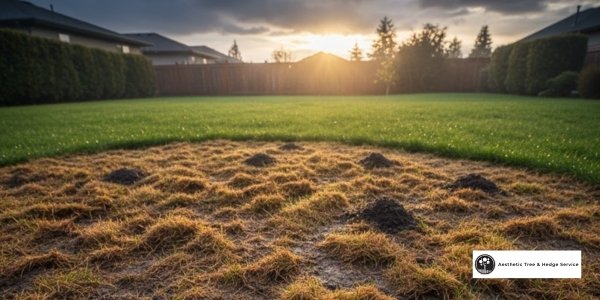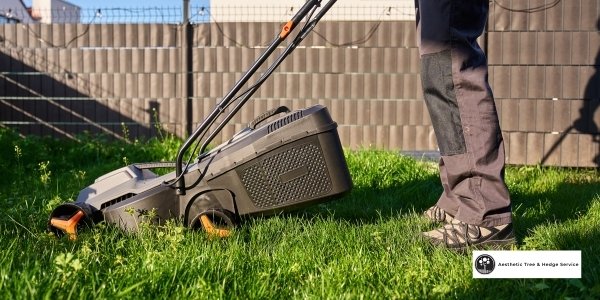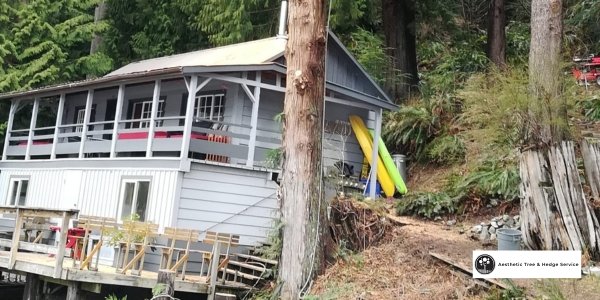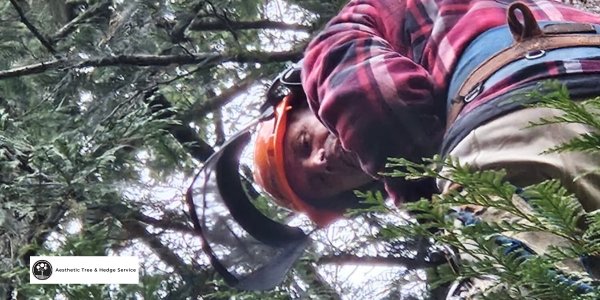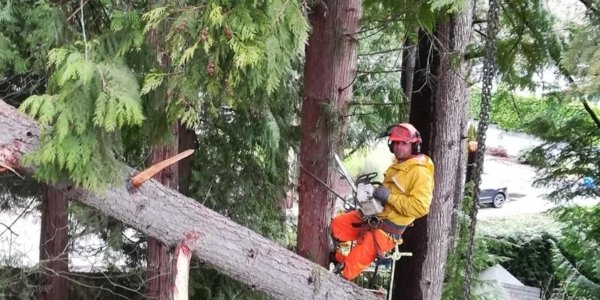Trees are an essential part of our environment, providing shade, beauty, and ecological benefits. However, like any living organism, trees can develop structural issues over time that may compromise their stability. To prevent trees from becoming hazardous or collapsing, arborists often use support cables, a technique designed to provide extra stability and support to trees with weak or damaged branches.
In this blog, we will explore what tree support cables are, why arborists use them, and the benefits they provide in ensuring the long-term health and safety of trees. We’ll also touch on when to call a professional arborist to assess whether your tree might need cabling.
What Are Support Cables for Trees?
Support cables, also known as tree cabling, are high-strength steel cables installed by arborists to provide additional structural support to trees. These cables are strategically placed between branches or tree trunks to reduce stress on weaker or overextended limbs, preventing them from breaking or falling.
Cabling is a proactive tree care method that helps reinforce the tree’s natural structure while allowing it to continue growing without compromising its stability. The process typically involves attaching the cables high up in the tree canopy, connecting critical branches to one another or securing branches to the main trunk.

1. Why Do Arborists Use Support Cables for Trees?
Arborists use support cables to protect trees that have structural weaknesses, but still provide value to the landscape. These weaknesses may arise due to poor branch attachment, age, or previous damage. Cabling helps preserve the tree’s overall health and appearance while minimizing the risk of branch failure.
Preventing Branch Failure in Weak Trees
Trees can develop weak points where branches attach to the trunk, particularly in species prone to heavy or overextended branches, like oak or maple. Without intervention, these branches may snap under their own weight or during strong winds. Cabling redistributes the mechanical stress placed on these branches, helping them stay secure and reducing the risk of breakage.
Supporting Multiple Trunks (Co-dominant Stems)
In trees with co-dominant stems (two or more trunks growing from the same base), there is an increased risk of splitting or failure at the point where the trunks meet. Support cables are used to connect these trunks, providing stability and preventing them from pulling apart during storms or high winds.
When to Call a Professional: If you notice large, heavy branches or co-dominant stems on your trees, especially if the tree is showing signs of stress or damage, it’s time to consult a professional arborist. They can assess whether support cables are necessary to ensure the tree’s stability.
2. Benefits of Using Support Cables for Trees
The use of support cables in trees offers numerous benefits, both for the tree itself and for the property owner. Not only does it extend the life of trees that may otherwise be removed, but it also enhances safety and preserves the aesthetic value of your landscape.
Preserving Mature and Valuable Trees
Mature trees often have significant landscape and ecological value, providing shade, beauty, and habitat for wildlife. Instead of removing a tree with structural weaknesses, cabling allows the tree to remain in place, preserving its benefits while addressing safety concerns.
Preventing Property Damage
Large branches or unstable trees pose a risk to nearby structures, vehicles, and people. Installing support cables helps minimize the likelihood of limbs breaking off and causing damage, especially during extreme weather conditions.
Reducing Liability
For commercial properties, parks, or public spaces, maintaining the safety of trees is essential to reducing liability risks. Trees with weakened limbs or structural vulnerabilities can become hazards, potentially leading to accidents or injuries. Arborists use support cables to mitigate these risks, ensuring that the trees remain safe for the surrounding environment.
When to Call a Professional: If your property has valuable trees that are showing signs of stress, it’s important to call an arborist to evaluate whether support cables could help. This is particularly important for mature trees located near buildings, walkways, or parking lots, where falling limbs could pose a danger.
3. How Support Cables Are Installed in Trees
The installation of support cables requires specialized knowledge and equipment to ensure it is done correctly and safely. Arborists begin by assessing the tree’s structure to determine the best placement for the cables. They will also evaluate the tree’s overall health and stability to ensure cabling is an appropriate solution.
Step 1: Assessing the Tree’s Structure
Before installation, the arborist conducts a thorough assessment of the tree, focusing on the weak points, branch attachment, and overall health. This allows them to identify which branches or trunks need reinforcement and where to place the support cables.
Step 2: Installing the Cables
Support cables are made of high-strength steel and are installed using specialized tools. The cables are typically attached high in the tree canopy, connecting branches that need reinforcement. Arborists drill small holes into the limbs and insert bolts, which the cables are secured to. The goal is to create a flexible, yet strong, system that allows the tree to sway naturally while reducing the risk of breakage.
Step 3: Ongoing Maintenance
Once the support cables are installed, ongoing maintenance is crucial to ensure they continue to provide the necessary support. Arborists recommend regular inspections to check for signs of wear or changes in the tree’s structure. Cables may need to be adjusted or replaced over time as the tree grows.
When to Call a Professional: Tree cabling is not a DIY project. It requires proper knowledge of tree biology and the use of specialized equipment. Always consult a certified arborist for cable installation to ensure it’s done safely and effectively.
4. Signs That a Tree May Need Cabling
Not all trees require cabling, but certain signs indicate that it may be necessary to prevent future damage. Recognizing these signs early can help you protect your trees and your property from potential hazards.
Leaning or Cracking Branches
Branches that appear to be leaning or have visible cracks where they attach to the tree trunk are common signs of structural weakness. These branches are at a higher risk of failure, especially in strong winds or during storms.
Heavy Limbs
Trees with large, heavy limbs that overhang buildings, driveways, or outdoor living spaces may benefit from the additional support of cabling. Arborists can help prevent these branches from becoming a safety risk by installing cables to reinforce them.
Storm Damage
If a tree has suffered damage from storms or strong winds, it may develop weaknesses that put it at risk of future failure. Cabling can help support damaged limbs or trunks, allowing the tree to recover without posing a hazard.
When to Call a Professional: If you notice any of these signs on your property’s trees, it’s time to call an arborist for a consultation. They can determine whether cabling is the best solution and ensure the safety of your trees and property.
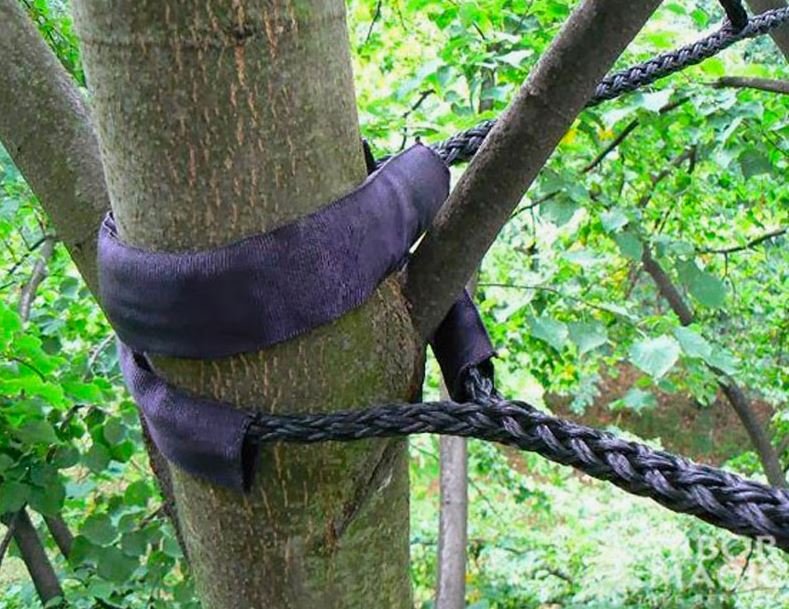
Why Arborists Use Support for Trees
Support cables play a crucial role in maintaining the health, safety, and stability of trees with structural weaknesses. Arborists use cabling as a preventative measure to preserve trees that might otherwise need to be removed, while also reducing the risks associated with falling branches and unstable trunks.
Whether you have a valuable mature tree or a tree at risk of failure, it’s essential to involve a professional arborist to assess the situation and install support cables where necessary. By taking this proactive step, you can ensure the long-term health of your trees while protecting your property from potential damage.
When in doubt, always consult a certified arborist to determine the best course of action for your trees. Their expertise will help you maintain a safe and beautiful landscape for years to come.
